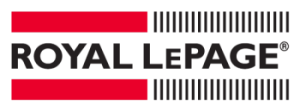
Canadians continue to grapple with the increased cost of living, and the Bank of Canada’s latest hike to interest rates this week will add more pressure to variable rate mortgage holders, as well as those looking to qualify for lending. While buyers who have secured a rate hold are anxious to make a purchase before it expires, some sellers have hit the pause button on listing their homes until economic conditions stabilize, further contributing to a lack of available inventory. Additional demand pressures will ensure that home prices will remain stable through the expected decline in sales activity in the coming months.
“The Canadian real estate market has been in a steady state of recovery since the start of the year. While these additional interest rate hikes, and those potentially to come, will likely put a damper on activity and sales volumes, demand for housing remains very strong,” said Phil Soper, president and CEO of Royal LePage.” We expect the rate of appreciation to moderate through the second half of 2023, causing home prices to level off or increase marginally.”
Royal LePage is forecasting that the aggregate price of a home in Canada will increase 8.5% in the fourth quarter of 2023, compared to the same quarter last year. The previous forecast has been revised upward to reflect strong activity and price appreciation in the first half of the year.
According to the Royal LePage House Price Survey released today, the aggregate price of a home in Canada decreased modestly by 0.7% year-over-year to $809,200 in the second quarter of 2023, indicating that nationally, the real estate market is close to the point where it will have recovered fully from 2022’s post-pandemic market correction. On a quarter-over-quarter basis, the aggregate price of a home in Canada rose 4.0% in Q2. This was the second consecutive quarter to show positive growth following a rapid decline in prices over the last year as a result of the Bank of Canada’s aggressive interest rate hike campaign, which began in March of 2022.
“The Bank of Canada’s prolonged series of interest rate hikes has changed where and how people live. It has pushed some buyer hopefuls to choose less expensive housing types or neighbourhoods. Others have chosen to relocate to more affordable markets across their province or across the country. And, some buyers have been pushed to the sidelines indefinitely,” Soper continued. “Economic uncertainty has caused some potential sellers to reevaluate their plans as well. The worry that they will be unable to find the move-up home they need in today’s tight market is a major concern. Further, there are those who secured fixed-rate mortgages at generational lows of two per cent or even less, who are understandably reluctant to wade back into a market with substantially higher borrowing costs. Fewer sellers mean fewer listings, which adds further pressure to our chronic shortage of inventory. Access to affordable housing in Canada will continue to be a major social issue.”
Read Royal LePage’s second quarter release for national and regional insights.
Second quarter press release highlights:
- Aggregate price of a home in Canada in Q2 2023 sits just 5.6% below the peak reached in Q1 of last year
- 94% of regions in the report posted quarterly aggregate home price appreciation
- Chronic shortage of housing supply, due in part to sellers’ hesitancy to list, continues to put upward pressure on home prices
- Royal LePage urges officials to quickly increase support for more development, including affordable, purpose-built rental buildings






